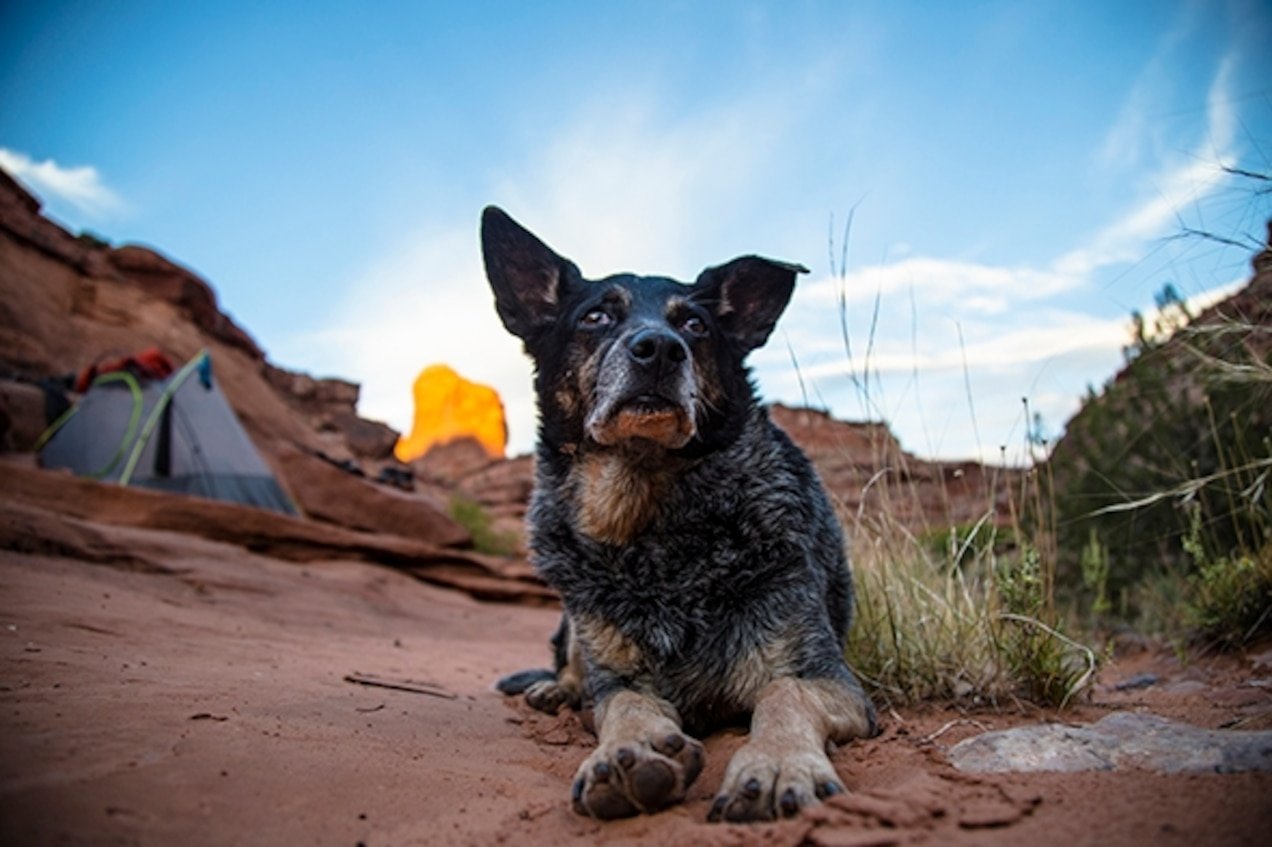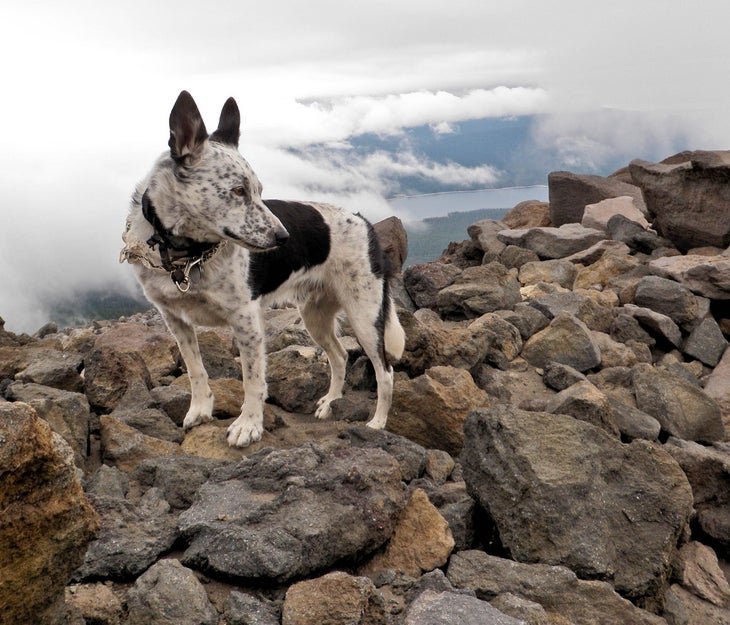So you’ve got a furry companion who loves to hit the trails with you, but you’re wondering how to choose the right ones for your Australian Cattle Dog. Well, fret not! In this article, we’ll guide you through the process of selecting the most suitable hiking trails that will not only keep your four-legged friend happy and safe, but also ensure an enjoyable experience for both of you. Whether you’re a seasoned hiker or just starting out, we’ve got you covered with helpful tips and considerations that will make your adventures with your Australian Cattle Dog unforgettable. So grab a leash, put on your hiking boots, and let’s embark on this wonderful journey together!

This image is property of cdn.backpacker.com.
Consider Your Dog’s Fitness and Age
Evaluate Your Dog’s Physical Condition
Before embarking on a hiking adventure with your Australian Cattle Dog, it’s essential to evaluate their physical condition. Consider their energy level, overall health, and any physical limitations they may have. If your dog is in good shape and has plenty of energy, they may be able to handle more challenging or longer hikes. However, if they are older, have health issues, or are not as physically fit, you’ll want to choose trails that are more suitable for their condition.
Consider Your Dog’s Age and Restrictions
The age of your Australian Cattle Dog is another factor to consider when choosing hiking trails. Puppies and young dogs are still developing, and their joints and bones may not be fully formed. It’s important to choose trails that are not too strenuous or long for them. Additionally, older dogs may have arthritis or other age-related conditions that require you to choose less challenging trails. Consider your dog’s age and any restrictions they may have to ensure their safety and well-being on the trail.
Choose Trails that Match Your Dog’s Fitness Level
To ensure a positive and enjoyable hiking experience for both you and your Australian Cattle Dog, it’s crucial to choose trails that match their fitness level. If your dog is highly active and has plenty of stamina, you can opt for longer and more challenging trails. However, if they have lower energy levels or are not used to long hikes, it’s best to select shorter and less strenuous trails. Matching the trail difficulty to your dog’s fitness level will help prevent exhaustion and injuries, ensuring a safe and enjoyable adventure for both of you.
Research Dog-Friendly Trails
Search for Local Hiking Guides or Websites
To find suitable hiking trails for you and your Australian Cattle Dog, start by searching for local hiking guides or websites. These resources often provide detailed information about the trails in your area, including difficulty level, length, and any restrictions or requirements for dogs. Local hiking guides may also include valuable tips and recommendations from experienced hikers, making it easier for you to choose the right trail for your dog.
Check Online Forums and Social Media Groups
Online forums and social media groups dedicated to hiking and dog ownership can be valuable sources of information when searching for dog-friendly trails. Joining these communities allows you to connect with fellow dog owners and hikers who can provide firsthand recommendations and share their experiences on different trails. It’s an excellent way to gather insights, learn about hidden gems, and find trails that are loved by other Australian Cattle Dog owners.
Consult with Experienced Hikers and Dog Owners
If you have friends, family members, or colleagues who are experienced hikers or dog owners, don’t hesitate to reach out to them for advice and recommendations. They may have valuable insights on dog-friendly trails in your area or suggestions for nearby hiking destinations that are suitable for your Australian Cattle Dog. Their firsthand knowledge and experiences can help you make informed decisions and choose trails that will be a good match for you and your furry companion.
Assess Trail Difficulty and Terrain
Look for Trail Difficulty Ratings
When researching hiking trails, it’s essential to look for trail difficulty ratings. Many trail guides and websites provide ratings that indicate the level of difficulty, such as easy, moderate, or difficult. These ratings take into account factors like elevation gain, steepness, and technical challenges. By considering these ratings, you can choose trails that are within your dog’s capabilities and ensure a safe and enjoyable hiking experience for both of you.
Consider the Terrain of the Trail
Along with the difficulty rating, it’s important to consider the terrain of the trail. Australian Cattle Dogs are known for their agility, but certain terrains may pose challenges or be more suitable for your dog. For instance, if your dog has joint issues, trails with rocky or uneven terrain may be more difficult for them to navigate. On the other hand, if your dog enjoys water, trails that pass by streams or lakes might be ideal. By considering the terrain, you can choose trails that cater to your dog’s preferences and limitations.
Check for Obstacles or Hazards
In addition to terrain, it’s crucial to check for any obstacles or hazards along the trails. This can include fallen trees, loose rocks, steep cliffs, or other potential dangers. Keep in mind your dog’s safety and abilities when assessing these obstacles. If your dog is not comfortable with heights or has difficulty maneuvering over certain obstacles, it’s best to choose trails that minimize these risks. Ensuring the trail is clear of hazards will help prevent accidents and injuries during your hike.
Take Climate and Weather into Account
Consider Your Dog’s Tolerance to Heat or Cold
When choosing a hiking trail, it’s important to consider your Australian Cattle Dog’s tolerance to heat or cold. These dogs are known for their endurance and ability to withstand various climates, but they still have their limits. In hot weather, avoid trails with little shade and opt for those with cooler temperatures or water sources for your dog to cool down. In colder conditions, shorter trails or those with less exposure to harsh winds can help prevent your dog from becoming too cold. Always prioritize your dog’s comfort and well-being when considering the climate and weather.
Check the Weather Forecast
Before heading out on a hike, always check the weather forecast for the day. Sudden changes in weather conditions can make a significant impact on your hike, affecting your dog’s safety and comfort. Avoid hiking during extreme weather events such as heavy rain, thunderstorms, or excessively hot temperatures. By checking the weather forecast, you can plan your hike accordingly and choose trails that are suitable for the predicted weather conditions.
Choose Trails Suitable for Current Climate
Apart from considering your dog’s tolerance and the weather forecast, it’s important to choose trails that are suitable for the current climate. Some trails may be more enjoyable during specific seasons when there is lush vegetation or blooming flowers. Researching the best time to visit certain trails can help you make the most of your hiking experience and provide a pleasant environment for your Australian Cattle Dog to explore.

This image is property of i.natgeofe.com.
Determine the Trail Length and Time
Assess Your Dog’s Endurance Level
To choose an appropriate trail length, it’s crucial to assess your dog’s endurance level. Australian Cattle Dogs are highly active and energetic, but their endurance may vary depending on their age, fitness level, and any health conditions. If your dog is in excellent shape, they may be able to handle longer hikes. However, if they are not used to extended physical activity, it’s best to start with shorter trails and gradually increase the distance over time. Assessing your dog’s endurance level will help prevent overexertion and ensure a pleasant hiking experience.
Consider the Distance and Duration of the Hike
When selecting a hiking trail, consider the distance and duration of the hike. Take into account your dog’s abilities and any previous hiking experiences. For beginner hikers or dogs new to the activity, shorter hikes of one to three miles may be more appropriate. As you and your dog gain experience and confidence, you can gradually increase the distance and duration of your hikes. Starting with shorter distances allows you to gauge your dog’s comfort level and make adjustments accordingly.
Plan for Rest Stops and Water Breaks
During your hike, it’s important to plan for rest stops and water breaks to ensure your dog stays hydrated and comfortable. Australian Cattle Dogs have a high energy level, but they still need regular breaks to rest and recharge. Take breaks at designated spots along the trail or whenever you notice your dog showing signs of fatigue. Provide fresh water for your dog to drink and allow them to rest in shaded areas if possible. Planning for rest stops and water breaks will help maintain your dog’s energy levels and ensure they stay well-hydrated throughout the hike.
Ensure Availability of Water Sources
Check if the Trail Has Accessible Water Sources
Before choosing a trail, check if there are accessible water sources along the way. It’s essential to ensure that your dog can rehydrate during the hike, especially on longer and more strenuous trails. Water sources can include rivers, streams, lakes, or even designated watering areas along the trail. Knowing the availability of water sources allows you to plan accordingly and bring collapsible water bowls or other items to provide water for your dog as needed.
Pack Sufficient Water for Your Dog
Even if there are water sources available on the trail, it’s important to always pack sufficient water for your dog. Depending on the length and duration of the hike, you may need to carry extra water to ensure your dog stays well-hydrated throughout. Consider the weather conditions and your dog’s typical water consumption to determine how much water to bring. It’s better to have more water than necessary to avoid the risk of dehydration for your furry companion.
Consider the Availability of Shade or Shelter
Along with water sources, it’s also important to consider the availability of shade or shelter along the trail. Australian Cattle Dogs have a thick double coat that can make them more prone to overheating in hot weather. Choosing trails with shaded areas or rest spots with shelter can provide a safe and comfortable environment for your dog to cool down. If shade or shelter is limited, consider hiking during cooler times of the day or bringing a portable canopy or umbrella to create shade for your dog.

This image is property of s3.amazonaws.com.
Evaluate Trail Regulations and Permits
Check if Dogs are Allowed on the Trail
Before heading out on a hiking adventure, always check if dogs are allowed on the trail. Some hiking trails may have specific regulations or restrictions regarding dogs, such as requiring them to be leashed at all times or prohibiting them altogether. It’s important to respect these rules and choose trails where you and your Australian Cattle Dog are welcome. Researching the trail regulations beforehand ensures a smooth and hassle-free experience without facing any potential fines or penalties.
Research Any Leash Requirements
In areas where dogs are allowed on the trail, there may be specific leash requirements that you need to follow. Some trails may require dogs to be on a leash at all times, while others may allow off-leash hiking in designated areas. It’s crucial to research and understand the leash requirements of the trail you choose. If your dog has reliable recall and is well-behaved around other hikers and dogs, off-leash trails may be an option. However, always be prepared to leash your dog if necessary to maintain safety and trail etiquette.
Determine if Permits or Passes are Needed
Certain hiking trails may require permits or passes to access, either for you, your dog, or both. These permits help regulate the number of visitors and maintain the preservation of the trail’s natural environment. Research if the trail you’re interested in has any permit or pass requirements and ensure you obtain them before your hike. Failing to comply with these requirements may result in fines or restricted access to the trail, disrupting your plans and potentially causing disappointment for you and your dog.
Consider Wildlife and Other Dogs
Research if the Trail is Populated with Wildlife
When choosing a hiking trail, it’s important to research if the area is populated with wildlife. Australian Cattle Dogs have a strong instinct to herd and may be prone to chasing or becoming overly excited around wildlife. If a trail is known for its wildlife encounters, consider your dog’s reaction to such situations. It may be necessary to choose trails that have less wildlife activity to ensure your dog’s safety and prevent any disruption to the natural ecosystem.
Assess Your Dog’s Reaction to Wildlife
As an owner of an Australian Cattle Dog, you likely have a good understanding of your dog’s behavior and reactions. Take this into account when considering trails with potential wildlife encounters. If your dog is generally calm and not easily provoked by wildlife, you may have more flexibility in choosing trails with greater wildlife activity. However, if your dog becomes highly aroused or has a strong prey drive, it’s best to avoid trails where you’re likely to encounter wildlife to prevent any unpredictable situations or conflicts.
Take into Account the Presence of Other Dogs
In addition to wildlife, it’s also important to take into account the presence of other dogs on the trail. Some trails may be more popular among dog owners, and encounters with other dogs may be common. Consider your dog’s temperament and socialization skills when choosing trails with a higher likelihood of encountering other dogs. If your dog is reactive or uncomfortable around unfamiliar dogs, it’s best to choose trails that are less crowded or where dogs need to be leashed. Prioritizing your dog’s comfort and safety will contribute to a positive hiking experience for both of you.

This image is property of cdn.backpacker.com.
Plan for Safety and Emergency Situations
Pack a Dog First Aid Kit
When venturing into the great outdoors, it’s crucial to pack a dog first aid kit. Accidents and injuries can happen on the trail, and being prepared can make a significant difference in the outcome. Your dog’s first aid kit should contain essentials such as bandages, antiseptic ointment, tweezers, and any necessary medications. Familiarize yourself with the contents of the kit and how to use them properly. Having a well-stocked first aid kit ensures that you can provide immediate care to your dog in case of minor injuries or accidents on the trail.
Carry Identification for Your Dog
In case you and your Australian Cattle Dog get separated on the trail, it’s crucial to carry identification for your dog. Make sure your dog’s collar has a securely attached ID tag with their name, your contact information, and any other relevant details. Additionally, consider getting your dog microchipped and ensure that the microchip information is up to date. This will greatly increase the chances of being reunited with your dog if they happen to wander off or get lost during your hike.
Research Emergency Vet Services in the Area
Before embarking on your hiking adventure, research emergency vet services in the area where you’ll be hiking. Familiarize yourself with their location, contact information, and operating hours. In case of a serious injury or health emergency, knowing where to turn for immediate veterinary care can be crucial. Keep the information easily accessible, either on your phone or in a physical form, so that you can quickly get the help your dog needs in case of an emergency.
Always Observe and Adapt
Monitor Your Dog’s Behavior and Comfort
Throughout the hike, it’s essential to constantly monitor your dog’s behavior and comfort. Pay attention to any signs of fatigue, discomfort, or distress. If your dog starts showing signs of exhaustion, such as excessive panting, lagging behind, or lying down frequently, it’s time to take a break or turn back if necessary. Your Australian Cattle Dog relies on you to watch out for their well-being, so be attentive to their needs and adjust your plans accordingly to ensure their safety and happiness.
Be Prepared to Adjust the Trail or Turn Back
While planning is crucial, it’s important to be flexible and prepared to adjust the trail or turn back if needed. Sometimes, unforeseen circumstances or unexpected challenges may arise during your hike. Be prepared with alternate options or backup trails in case your chosen trail becomes inaccessible or unsafe. Trust your instincts and prioritize your dog’s safety over completing a particular hike. Remember, the goal is to enjoy the hiking experience with your Australian Cattle Dog, so always prioritize their well-being and adjust your plans as necessary.
Enjoy the Hiking Experience with Your Australian Cattle Dog
Lastly, don’t forget to enjoy the hiking experience with your Australian Cattle Dog! These energetic and intelligent dogs thrive in outdoor environments, and hiking provides a fantastic opportunity for them to exercise, explore, and bond with their owners. Take the time to appreciate the natural beauty around you, observe your dog’s enthusiasm, and treasure the shared moments on the trail. By following the tips and guidelines mentioned above, you can ensure a safe and enjoyable hiking experience for both you and your Australian Cattle Dog. Happy trails!
This image is property of images.squarespace-cdn.com.


